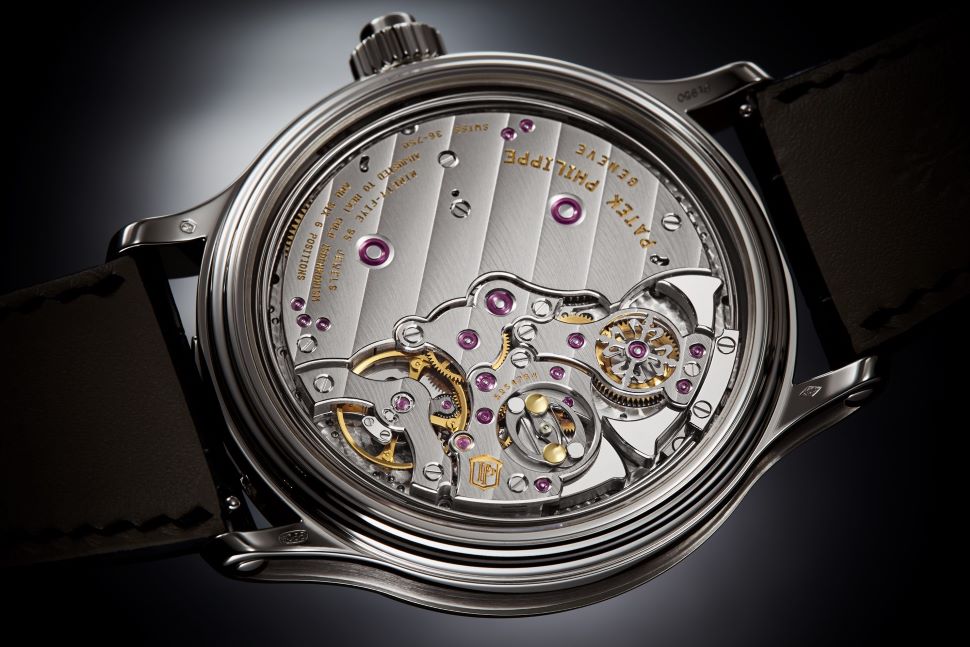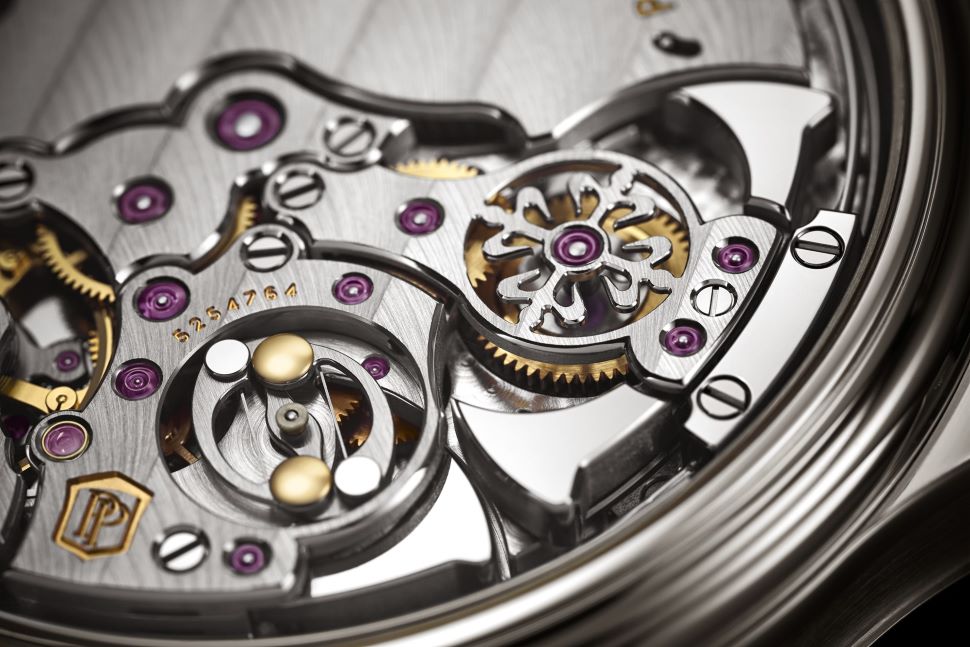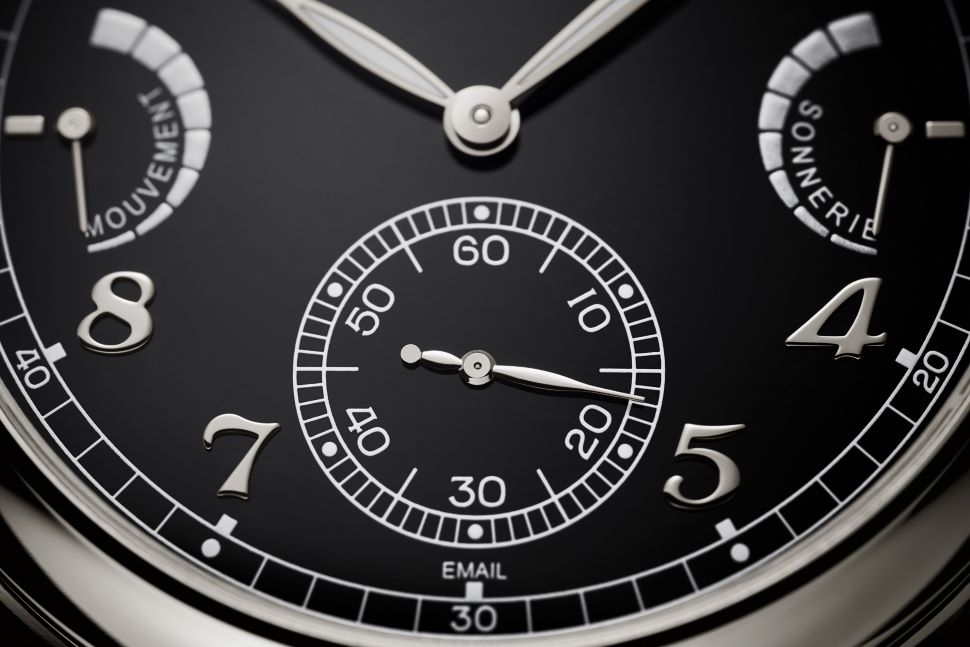The announcement of a new Patek Philippe grand complication chiming watch is a special occasion. They are rare and highly sought after. In fact, one – the Grandmaster Chime ref. 6300-01/A, a movement that is a magnum opus of chiming complications in a small case, holds the world record as the most expensive watch ever made.
There have been Patek minute repeaters before, the ref. 3939 still stands out as the paragon of understated complications in both the tourbillon and repeater combination. The ref. 5275P, from 2014, with jumping hours, minutes, and seconds also rings a bell (or gong)!
However, the ref. 6301P is the first purebred Patek Philippe grande et petite sonnerie watch produced by the esteemed manufacture. This is, under any circumstance, a rarefied field. There are very few that chime in the same circles: Greubel Forsey and Vacheron Constantin come to mind. The first watchmaker to have “a go” at the problem of reducing the complex chiming mechanism into wristwatch size was none other than Philippe Dufour. Succeeding in producing a watch that has so many striking functions while remaining wearable on the wrist involves innovation and innate knowledge of the sound and science of ringing in the changes. The Patek Philippe 6301P is no exception to the rule.

The sonnerie watch always includes a repeater. It stands to reason. If you can produce a grande et petite sonnerie that chimes en passant (in passing) then the step up to ask the watch to repeat on demand (a minute repeater) is not that far removed. In grande, or full-strike mode, the watch will chime on the hour, as well as the quarter hours. In petite sonnerie, or small strike mode, it will chime only the hours. There is also a “silent” mode, which speaks for itself. The minute repeater strikes “on-demand”, chiming the hours, quarter hours past the hour, and the minutes past the most recent quarter-hour, whenever a slide or button on the side of the case is pressed.

Aesthetically, the ref. 6301P is a return to form for Patek, a simple and clean look that belies the horological complexity beneath the dial. The case is made from platinum, a metal that is known to possess good acoustic properties, where the repeater mechanism is operated from a button in the crown and the sonnerie from a slide at the base of the watch. At 44.8mm in diameter and 12mm depth, the watch is still large, but considering the complicated movement inside, these are reasonable dimensions. As with any platinum cased Patek Philippe, there is a diamond set in between the lugs, although on this model it is placed at 12 o’clock. The dial is a beautiful black grand feu enamel on a gold base with tapering leaf hands. The case and dial design are erudite and functional, but in their simplicity, beautifully proportional and easy to operate.
The case houses the new Patek calibre GS 36-750 PS IRM. The new movement borrows a lot of learning and patented mechanics from the Grandmaster Chime. It has a three-day power reserve for the time part of the movement and a 24-hour power reserve for the chiming mechanism in full strike mode. As seems standard for a grand striking watch, there are separate mainspring barrels for the sonnerie plus repeater mechanisms and for the going train. Cleverly, the crown winds the mainspring for the latter in one direction and for the strike mechanism in the other.

The speed of the chime is controlled by a centrifugal silent regulator and as well as the gongs and hammers, it is visible through the display caseback. The actual sonnerie and repeater works are on the dial side and therefore not visible. Patek provides a solid platinum caseback as well is you feel the acoustics are aided by fitting this.
Other innovations to the mechanism are seen in the escapement, which has a silicon (Spiromax) balance spring and a second hand that is a “seconde morte” (or dead beat). The movement is Patek Philippe’s top tier finishing: rounded angle, polished flanks, Geneva stripes, black-polished steel, and mirror-bright countersinks. It is a joy to behold and you would have to feel that the tonal properties of the watch truly outweighed seeing the movement to cover it all up with a solid case back.

In conversation with Thierry Stern about the new timepiece, he admitted that chiming watches are a particular passion of his and his father’s. It is not so much the complication per se, which is one of the most difficult known in high horology, but that despite the introduction of technology and computer-assisted design, there is still a strong human and idiosyncratic element to the production of sonneries that make the art of their manufacture a fascinating one. Notwithstanding trying to control all factors, no two sonneries or repeaters are ever exactly alike in tonality. There is still that magic in the watchmaker’s art that requires the hand dexterity and the experienced listening capabilities of the human ear to produce a chiming watch of note (no pun intended). Patek Philippe’s experience in this arena is second to none.
In terms of money, the price put on such horological pyrotechnics runs above £1 million. However, that is approximately the going rate for chiming complications in this select field. I have no doubt that the watch will be highly sought after by enthusiasts and collectors alike.
Opening Picture: Patek Phillippe ref. 6301P














Show Comments +